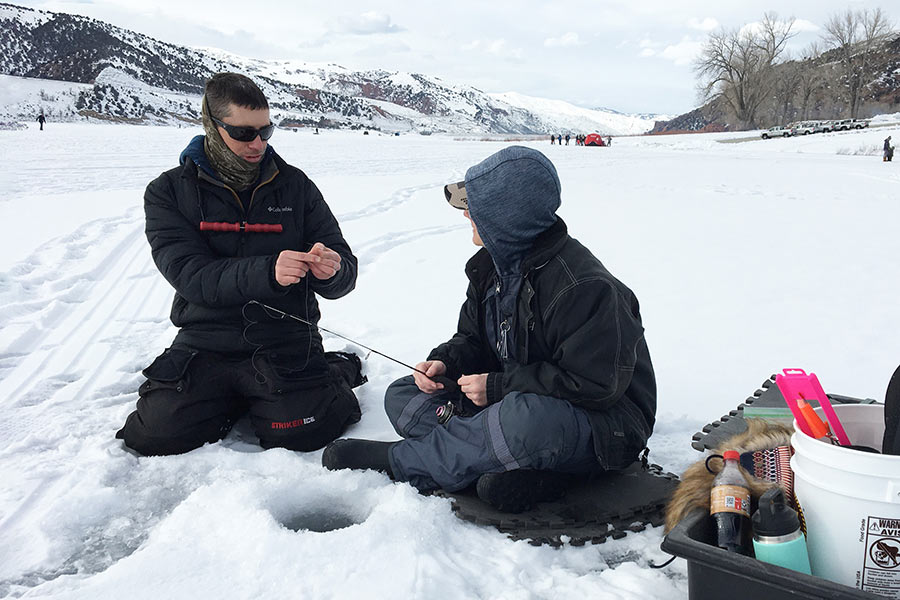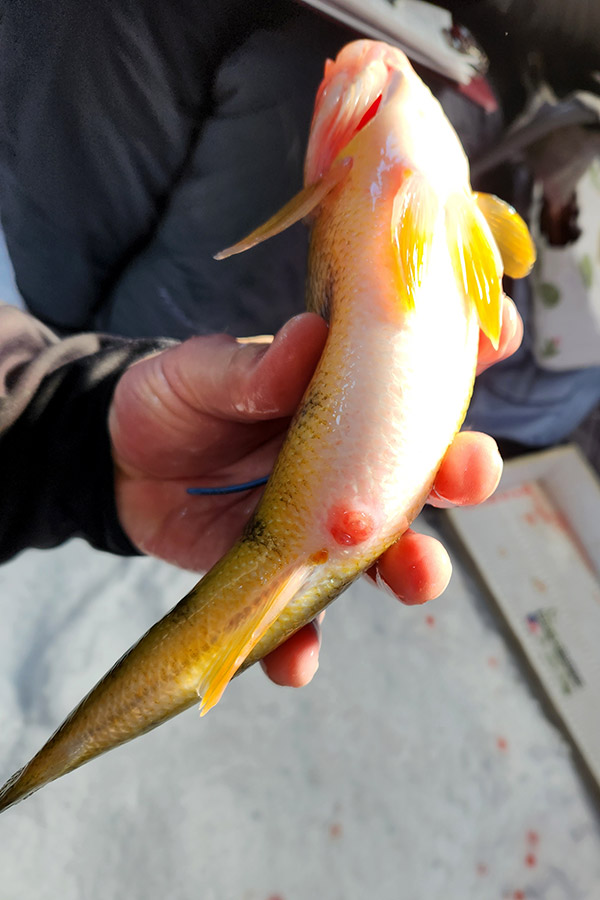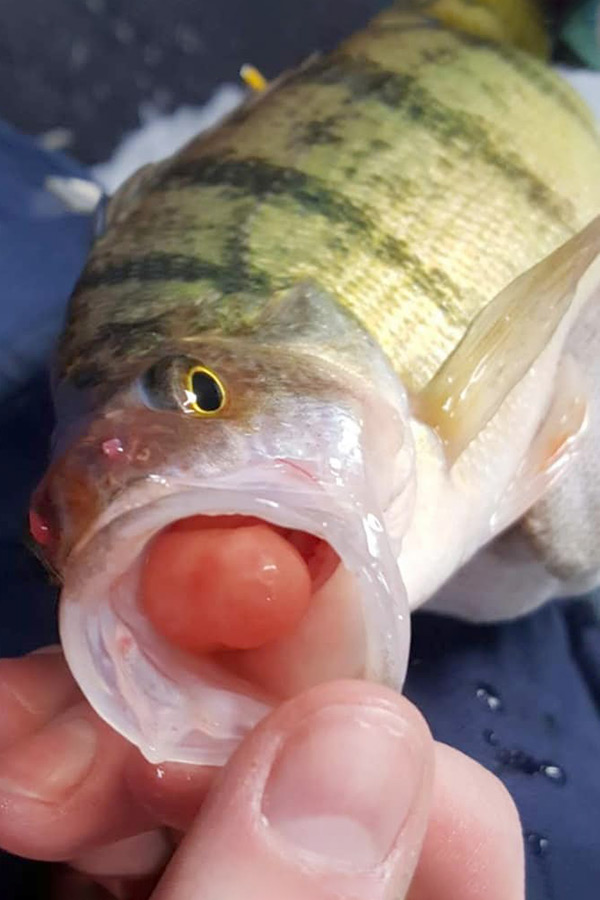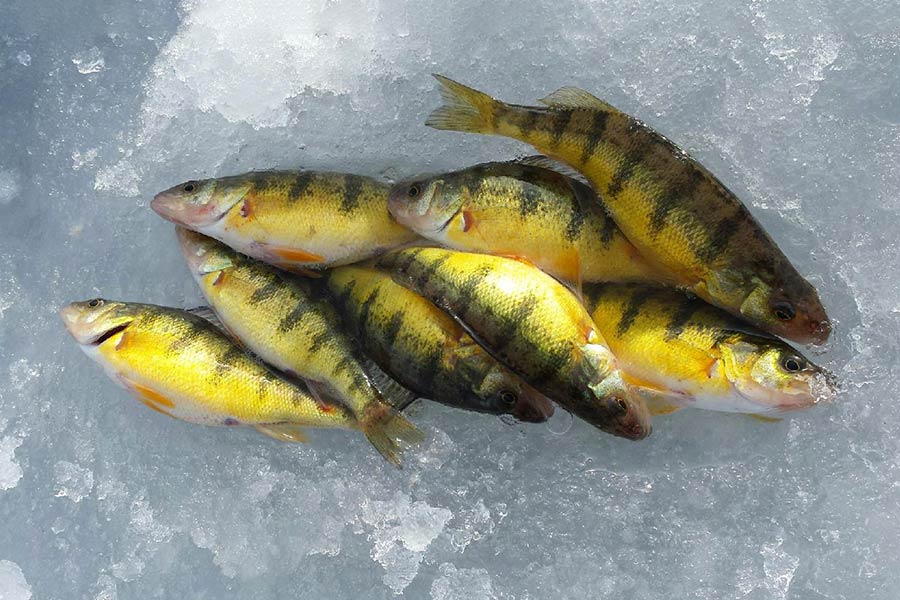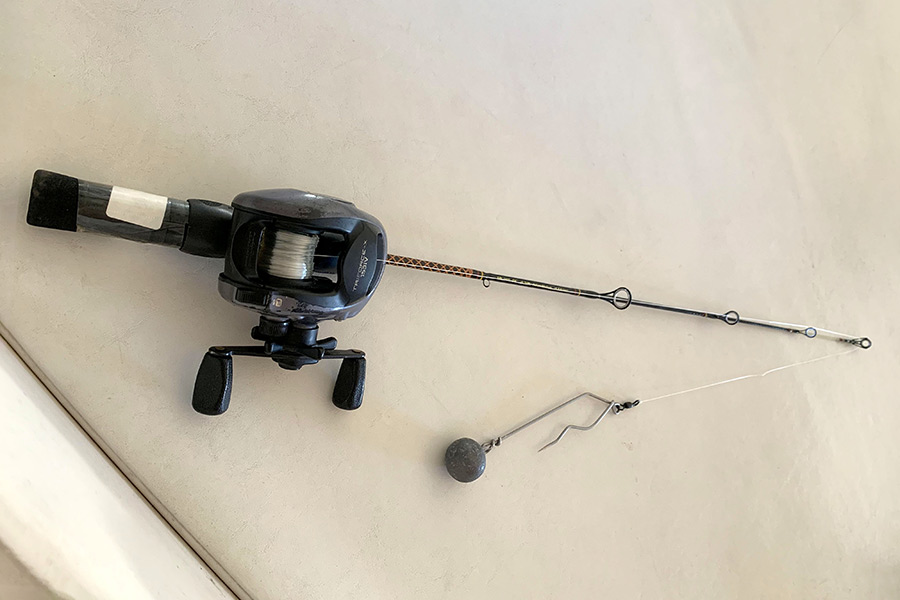Go deep!
What anglers should know about panfish reeled up from the depths
Chris Penne
Northern Region Aquatics Program Manager
Some of my favorite wintertime fish to catch are panfish like yellow perch, crappie and bluegill. They put up a great fight when caught on some light ice fishing gear, and they can make a great meal when you want to keep some fish. In addition, each winter there are usually several reservoirs where fishing for these species can be hot through the ice.
As a fishery manager, I'm always thinking of ways that I can make fishing better for Utah's anglers year-round, and one of my areas of interest over the past few years has been barotrauma in panfish. Specifically, what we as anglers can do to help the survival rates of panfish caught and then released in deep water.
What's up with barotrauma?
So what is barotrauma? Well, besides being a very cool potential name for a rock band, barotrauma simply means pressure damage. In fish, it usually shows up as injuries to their tissues from rapid changes in pressure as a result of being reeled up from deep water.
In the case of fish, deep water usually starts at about 25 feet below the surface. Fish reeled up from 25 feet or deeper usually show some kind of barotrauma. The most common symptoms of barotrauma are bulging eyes, bloated body, swollen or protruding vent, and gas bubbles under the skin. An obvious sign of this injury is an expanded swim bladder that can, in some cases, push the stomach out of the fish's mouth.

If you're familiar with the decompression sickness that SCUBA divers get (aka "the bends") when they come up too fast, this is the same thing, only for fish.
How fish species handle depths differently
Not all fish are affected in the same way. Fish like trout and salmon have a duct that connects their air bladder to their stomach, which allows them to "burp" excess gas from their swim bladder when they are reeled up from depth.
On the other hand, fish like perch, crappie and bluegill have a swim bladder that is both filled and decompressed by the transfer of gasses from their blood, which is a much slower process. This means these fish cannot adjust the size of their swim bladder quickly enough for the decreased pressure encountered when reeled up rapidly from depth.
Adding to the impacts of barotrauma, fish often have a difficult time swimming back down to the depth where they were caught in the event they are released by anglers. If you are harvesting fish, there's no problem at all; barotrauma won't affect the quality of your meal. However, where I see both a challenge and opportunity as a fishery manager is increasing survival rates for fish that experience barotrauma and then are released.
Reducing the impacts of barotrauma, one fish at a time
There have been numerous studies in both fresh and saltwater species demonstrating that barotrauma results in higher rates of post-release mortality; the shallower the fish is caught, the more likely it is to recover.
While research into how barotrauma affects freshwater fish populations is just beginning, the emerging picture is that releasing a fish with barotrauma now could have measurable impacts on the number of quality fish available to catch just a year or two later. For example, in the case of panfish, when an age group of fish starts approaching harvestable size, anglers will often sort through smaller fish in search of the larger fish to keep. This can result in higher mortality rates for released smaller fish that were nearly harvestable. In other words, we may be losing more fish than we realize to delayed mortality from barotrauma upon release, and these fish are lost just a year or so before they would become desirable for harvest.
So, what can be done about it?
Here are some ways to reduce the overall effects of barotrauma and decrease post-release fish deaths:
- Fish in shallower water where barotrauma isn't an issue. That said, sometimes fishing for panfish isn't the easiest in shallower depths, and anglers wanting to catch larger fish more often find them in deeper water.
- Keep the fish you catch when fishing at depth and stop when you reach your daily possession limit. (Avoid "sorting through" fish on the surface.)
- Use a descending device to release fish that come from deep water. This will allow an angler to put a fish back at the depth where it came from and essentially recompress the fish.
Descending devices and how to deploy them
Descending devices come in a few different forms. The simplest and most popular is the inverted hook and weight, but there are other designs that are less invasive and can even be set to release the fish at a particular depth. The inverted hook designs can be purchased for about $15–$20 from sporting goods stores and online retailers. The less invasive, calibrated-depth releases run around $50.
I've been using the inverted hook design for a few years and it's very simple to use. I bring an extra fishing rod with the inverted hook and weight tied on so it's ready to go when I need to release a fish with minimal above-water exposure. When releasing a fish back at depth, I simply thread the inverted hook through the jaw of the fish and then lower it back down to depth using the fishing rod and reel. Once I feel the weight hit the bottom of the reservoir, I just give the rod a small jerk (similar to a light hookset) and the fish is released.
I've combed the scientific literature on recompressing fish using descending devices, and have found that the survival rates for deepwater Pacific rockfish released with descenders are much improved over simply releasing these fish back at the surface.
Last winter, a few colleagues and I did our own side project to gather footage of yellow perch and black crappie released back to depth in Pineview Reservoir using a descending device. In the video we captured, it's clear that fish got more active as they reached the depths from which they came and then each swam away quickly upon release.
Fishing for future success
While keeping what you catch from depth and fishing shallow to avoid barotrauma are the best recommendations to limit unintentional fish mortality, if you find yourself fishing deep and catching some fish that are smaller than you would like to harvest, consider using a descending device for releasing those smaller fish. It's kinder to the fish and is a better move for ensuring the fishery you like to fish will be good in the years to come.

